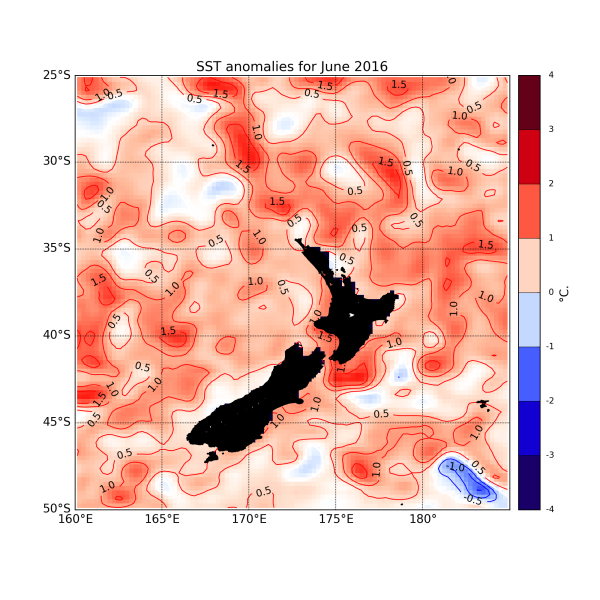The latest remnants of the strong El Niño which peaked late in 2015 have now vanished in the tropical Pacific Ocean, and the Pacific is ENSO-neutral. Ocean temperatures along the equatorial Pacific are now near or slightly below normal, and recent developments in the ocean – atmosphere system are pointing to a possible transition to La Niña over the coming three months.
Atmospheric circulation along the equatorial Pacific has returned to near-normal, and the Southern Oscillation Index (SOI) is slightly positive. Cooler than normal sub-surface ocean waters are present in the central equatorial Pacific.
International guidance indicates that La Niña conditions are likely (57% chance) to appear over the next three month period (July – September 2016). The likelihood of La Niña conditions becoming established in the Pacific increases slightly later in the year, and reaches 65% in the first three months of 2017. However, models forecasts indicate that if La Niña indeed develops, it is likely to remain in the weak or moderate category.
For July – September 2016, weak anomalously high pressure is forecast to the north of New Zealand and expected to bring weak northerly quarter flow anomalies.
Sea Surface Temperatures
Sea surface temperatures are forecast to remain above normal over the next three months, especially to the west of New Zealand.

